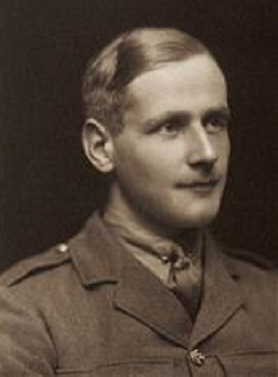Basil Rahere Garrod was born in London on 29th December 1897. Like his brother Thomas, he was educated at New Beacon, Seven Oaks in Kent and then at Marlborough College. On leaving Marlborough, he went to the Royal Military College in Sandhurst, gaining his commission as Second Lieutenant in the 1st Battalion, Loyal North Lancashire Regiment, in December 1915.
Basil joined the battalion on 21st January 1917 at Fricourt, on the Somme, where they were undergoing training. On 12th February, Basil was on the front line for the first time; the war diary describes it as “a very peaceful time with only three casualties.”
He remained with the battalion, who were involved in the German Retreat to the Hindenburg Line in March 1917 and the Battle of Passchendaele from July to November 1917. After this, Basil was transferred to the Royal Flying Corps as an observer, joining the 149th Night Flying Squadron, whose objective was to fly night-bombing missions in Royal Aircraft Factory F.E.2b bombers. It is worth noting that Richard Garrett and Sons of Leiston were sub-contracted by Boulton and Paul to build the nacelle of these aircraft.
At the end of the war, the squadron was stationed at Bickendorf, Germany, as part of the army of occupation. It was here that Basil succumbed to the “Spanish Flu” epidemic that was sweeping through Europe. He died of pneumonia on 4th February 1919 and is buried in Cologne Southern Cemetery, Germany.
For his war service, Basil’s family received the British War and Victory Medals. He is also remembered on Melton War Memorial and two battlefield grave markers, one of them a propeller, are kept at Melton Old Church.

